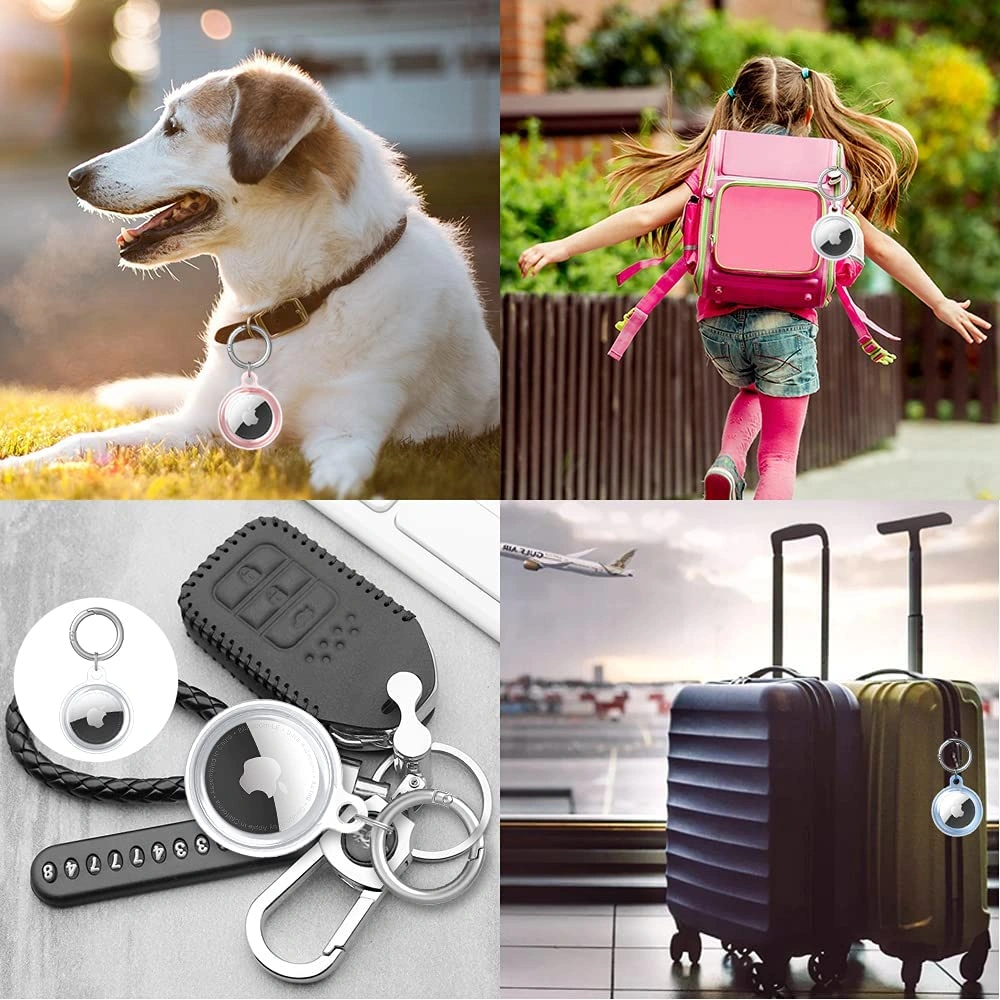Introduction: do small labels really make a big difference?
“Where did I put my keys?”“Did I leave my headphones at the coffee shop?” These are the kinds of worries that almost everyone feels. From rummaging through sofa crevices to returning to public places in a futile search, it is not only a waste of time, but also likely to cause unnecessary damage. In recent years, Smart tags such as Apple AirTag, Samsung Galaxy Smarttag and Tile have come to the public’s attention. They claim to be able to“Make loss a thing of the past”. But can this little gadget, the size of your hand, really solve our problems? What is its real value? This article will be from the functions, scenarios, limitations and other multi-dimensional analysis, to help you determine“Whether the smart label is worth buying.”.
What are smart tags and how do they work?

A smart tag is essentially a“Lightweight location device” designed to track small objects such as keys, wallets, and backpacks. Common products include Apple AirTag, Samsung Galaxy Smarttag + , Tile Pro, and Google’s Pebblebee, among others. Prices range from $10 to $50.
Their core working logic is the dual identity of Bluetooth and social networking:
Close range location: connected to the phone via Bluetooth low energy (BLE) , the App displays the approximate direction and distance of the tag within 10-80 meters, it also lets the tag make a“Didi” sound (even if it’s hidden in a drawer) .
Long-range tracking: when items are out of bluetooth range, rely on“Social networking”(crowd-sourcing location) . Apple’s AirTag, for example, relies on the devices of hundreds of millions of iPhone users around the world to anonymously upload location data to the“Find” network whenever an iPhone approaches your lost AirTag, you can see the real-time coordinates on your phone-the equivalent of countless phones spying on you.
Key advantages of smart tags
The rapid adoption of smart tags stems from their“Irreplaceability” in a number of scenarios:
1. The ability to retrieve lost items: from finding a needle in a haystack to pinpointing its location
Whether it is a high-frequency use of small items such as keys and wallets, or backpacks, suitcases and other travel necessities, smart tags can significantly improve the probability of recovery. For example:
When you can’t Find Your Keys at home, open your phone App and let the tag speak. You’ll be able to locate your keys in three seconds
A suitcase left at the airport on a business trip can be seen through social networks to see which carousel it was delivered to;
There’s even a tag on your pet’s collar that allows nearby cell phone users to locate your general location once you’re out of the house.
According to the data, the use of smart tags has increased the recovery rate of items by about 70% , especially in public places (shopping malls, subways, airports) .
2. Real-time location and alert: nip in the bud
In addition to“Lost and found”, the more important value of smart tags is“Prevent loss”:
Leave Alert: once you set the“Safe range”, your phone will pop-up + vibrate to alert you if your keys or wallet are out of your range (i.e. you forgot your keys when you walked out the door) , avoid the embarrassment of“Leaving the house only to find out”
Map Location: you can see the“Last known position” of the item in the App, combined with map navigation, you can quickly rush to the vicinity to find;
Sound hint: when you can’t find it at close range, let the tag sound or let the phone ring (two-way search) to solve the problem of“Can’t find the phone when the phone is silent”.
3. User experience and eco-compatibility: seamlessly integrated into daily life
Smart labels from major brands are deeply integrated with their ecosystem, and the user experience is extremely fluid:
Apple AirTag is built directly into the iOS“Find” App, without the need for additional downloads. It works with device management on the iPhone, iPad and Mac, and can even“Find my keys” using Siri
Samsung’s Galaxy Smarttag + connects with the Galaxy phone’s“SmartThings” ecosystem, enabling Bixby voice control and“Centimeter-level directions” using the phone’s ultra-wideband (UWB) technology
Google-partnered tags, such as Pebblebee, are integrated into Android find my device, which works on most Android models and is more widely compatible.
This“System-level integration” turns smart tags from an“Extra tool” into a“Part of life” with almost no learning costs.
4. Battery life and portability: lazy-friendly design
Smart tags outperform traditional location devices in terms of battery life and portability:
Long battery life: CR2032 button battery or dedicated long-term battery life generally up to 1-2 years (such as AirTag about 1 year, Tile Mate up to 3 years) , no frequent charging, “One-pack”;
Ultra-portable: small enough to make a key ring (AirTag 3.1 cm in diameter) , a credit card-sized Tile Slim, or even slip into the middle of your wallet without affecting the original use of the item.
What are their limitations?
Despite their obvious advantages, smart tags are not a panacea. Their limitations need to be understood rationally:
1. It relies on the internet and has limited offline reach
Smart tags rely entirely on Bluetooth + social networking for location:
Bluetooth range is only 15-80 meters, after exceeding must rely on other users of mobile phone“Relay”;
In remote areas (mountains, countryside) or empty streets late at night (few mobile phone users) , social networks can“Fail”, with location updates delayed or even interrupted;
If the item is placed in a confined space (such as a metal box, thick cloth bag) , the Bluetooth signal will be shielded, resulting in positioning failure.
2. Privacy issues: protection against abuse and security risks
Due to their precise location, smart tags can be misused as“Tracking tools”(such as stowing them on people’s belongings) , sparking privacy controversy. To this end, major brands have added anti-tracking features:
If the apple AirTag is away from the owner for a long period of time, it will automatically send an“Unknown AirTag tracking” alert to a nearby iPhone
Android tags have similar“Anomaly tracking detection”, but the sensitivity of different brands vary greatly, there are still loopholes.
3. Price and ecological barriers
Price difference: official flagships (like AirTag for about $30 and Samsung SmartTag + for about $25) are more expensive than third-party brands (like Tile Mate for about $15) , but have more stable network coverage and features
The ecosystem isn’t interoperable: Apple’s Find My Device network is limited to Apple devices, and Android tabs aren’t accessible; Android’s Google Find My Device Network doesn’t support iOS devices either. If a family member uses a different system (e.g. iPhone and Android phone) , it may be necessary to purchase multiple brands of labels, increasing the cost.
For Whom are smart labels suitable?
1. People who forget things and lose things
If you’re constantly searching for your keys, headphones, remote control, or constantly worrying about leaving the door unlocked, a smart tag could save you a lot of searching time.
2. Families with pets or children
Put a tag on your pet’s collar to help prevent strays, and a watch or backpack for your child to quickly locate in a crowded area (Park, Mall) , reduce supervision stress (Note: It is not recommended as the only child supervision tool, only as an aid-RRB- .
3. Frequent business travelers
Luggage, passport bags and chargers are among the most frequently lost items. Smart-tag“Departure alerts” could prevent things being left behind at hotels and airports, and social networks could improve the chances of bags being recovered when they’re lost during international travel.
4. People interested in digital gadgets
Users who like to try new technologies and pursue life efficiency will enjoy the“Technological convenience” brought by smart tags, especially in the multi-device ecological linkage (such as using the watch to find mobile phones, using the voice assistant to find things) to obtain satisfaction.
Is It Worth It? You Get What You Pay For?
To determine whether smart tags are worth buying, consider the“Costs” versus the“Benefits”:
From the price point of view: dozens of dollars for“Worry-free”, cost-effective outstanding
Mainstream smart tags often cost $10-$30, the equivalent of a fast-food meal, but address long-term“Loss anxiety.”. Compared to the cost of losing a key for a lock cylinder (about $50) , the time it takes to replace a lost wallet, or the cost of losing a suitcase (hundreds of dollars) , this is a bargain.
Compared to alternatives: each has its pros and cons, but smart tags are lighter
Compare GPS devices: GPS trackers (like pet GPS collars) can track your location in real time, but they’re expensive (starting at about $80) , require a charge (1-7 days of battery life) , and are bulky enough for high-value items Smart tags are better suited to low-cost, low-maintenance everyday gadgets.
Compare this to“Memory habits”: “Post-it notes” and“Place settings” can also reduce loss, but are less effective in dealing with unexpected situations (e.g. , leaving the house in a hurry) , smart-tag“Automated reminders” are more reliable.
Scenario analysis: these situations are“Better value for money,” while others are“Optional.”
Must-buy scenarios: keys, wallets, backpacks, suitcases (high-frequency use + big trouble after the loss) ;
Optional: remote control, headphones (they’re easy to lose and easy to find at home)
Not recommended: rarely used items (such as seasonal clothing, toolboxes) , or oversized items (such as furniture, large appliances) .
Conclusion: it’s worth it, depending on your needs
Smart tags aren’t just a necessity, but for most people, they’re a cost-effective way to optimize your life: at a fraction of the cost, they’re a solution to the frequent annoyance of being left behind, especially in the prevention and improve the recall rate.
If you fall into one of the following categories, it’s worth buying:
Small items are often lost, or have caused damage as a result
Fast-paced life, hoping to reduce the“Looking for things” waste of time;
Care about the fluency of life experience, like to use technology to simplify daily life.
For the best eco-friendly experience, it is recommended that you choose a label that is consistent with your phone’s brand (AirTag for iphone users, SmartTag for Samsung users, and Google compatible for Android users) . After all, a seamless integration into life, almost“Zero learning cost” of small tools, is the real value of“Smart” products.







